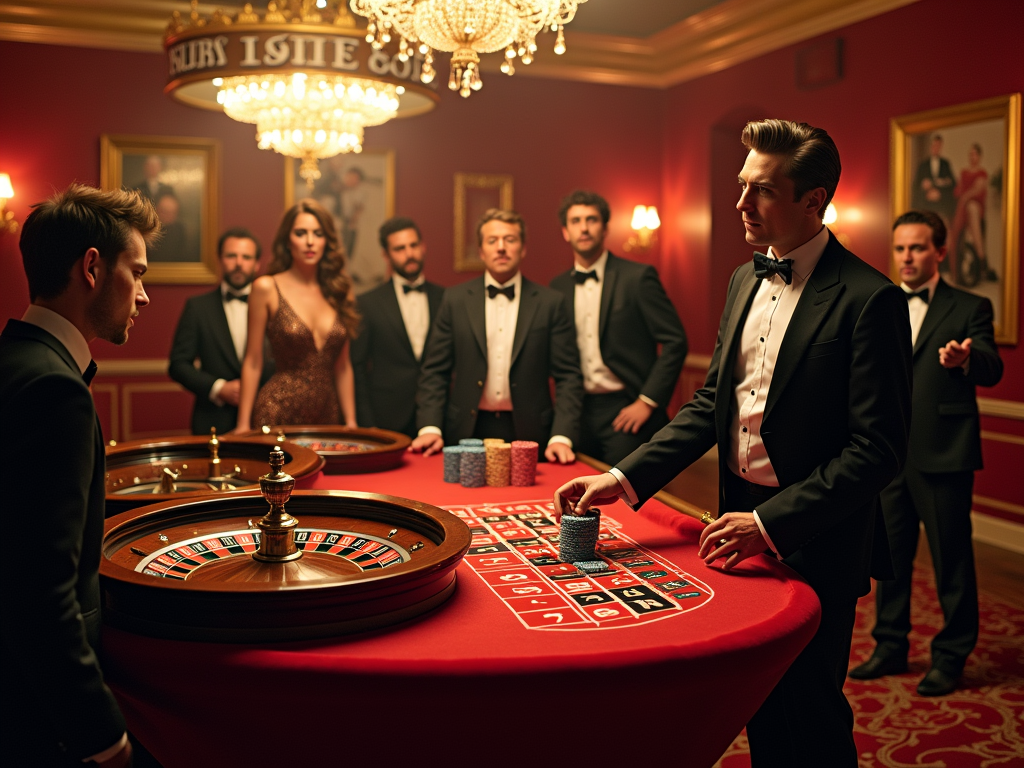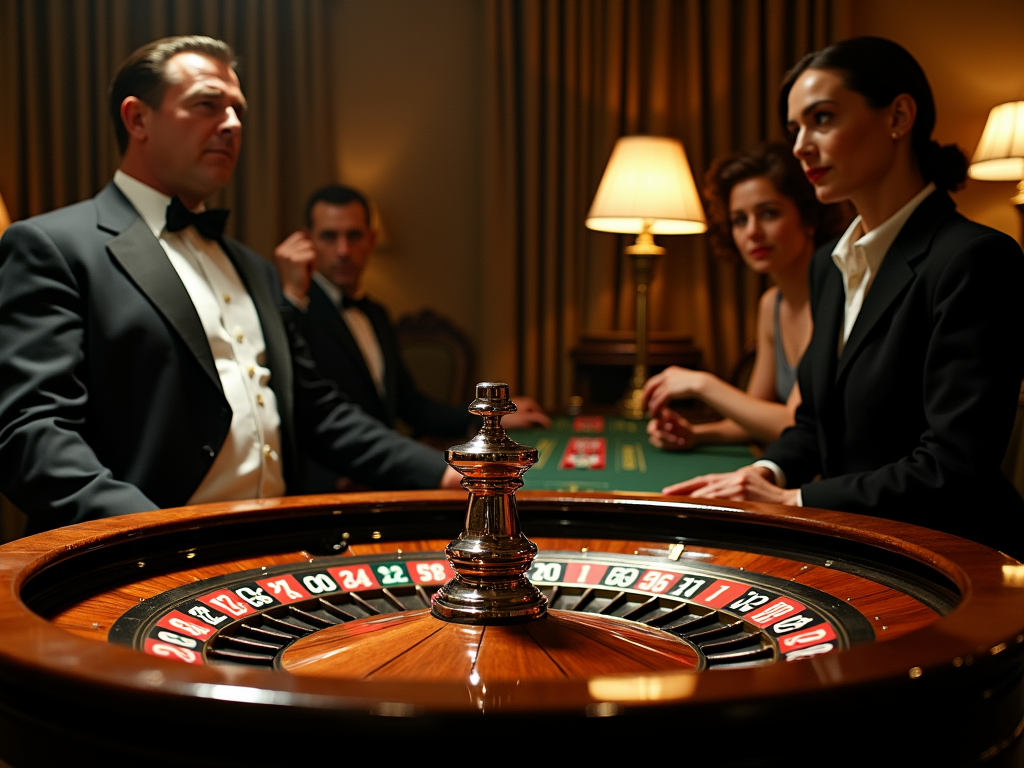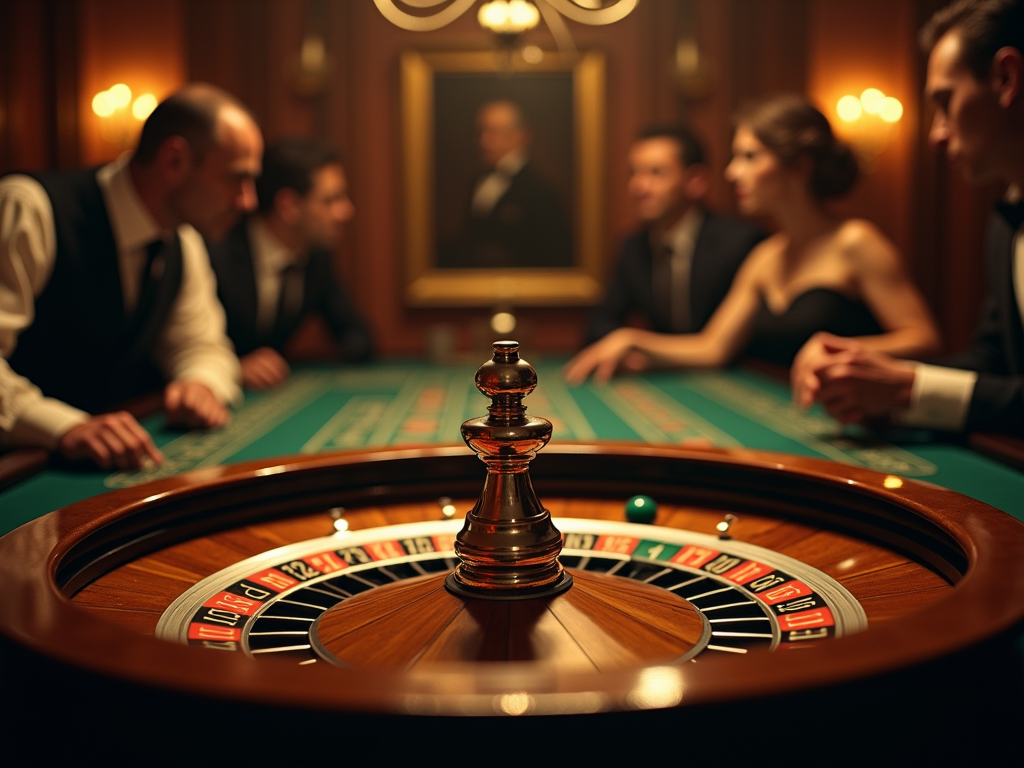The Origins and Allure of Roulette
Roulette emerged from Blaise Pascal’s failed scientific experiment in the 1650s — a perpetual motion machine attempt that transformed into one of today’s most thrilling casino games. The numbers on the wheel total 666, leading to its infamous nickname, “Devil’s Game,” which adds to its mysterious allure.
Key Takeaways
- European roulette features 37 pockets with a 2.7% house edge, while American roulette contains 38 pockets and a 5.26% house edge.
- The Monte Carlo Casino marked a historic moment in 1913, as black appeared 26 consecutive times.
- Notable victories include Sean Connery landing three straight wins on number 17 and Ashley Revell’s bold $135,300 red bet.
- Popular systems like the Martingale strategy fail due to table limits and the constant house edge.
- Each spin stands alone as an independent event, making it impossible for any betting pattern to beat the built-in house advantage.
Roulette: A Balance of Chance and Strategy
My analysis shows that roulette combines simple mechanics with deep statistical principles. The game’s enduring appeal stems from its perfect balance of chance and strategy. However, no method can guarantee consistent wins. I encourage players to focus on the entertainment value rather than chasing losses through progressive betting systems.
The Mathematics Behind the Devil’s Game
The fascinating link between mathematics and roulette’s spinning wheel and betting system started with a surprising twist of fate. French mathematician Blaise Pascal didn’t set out to create one of the most popular casino games that captivate players worldwide. Instead, his pursuit of a perpetual motion machine in the 1650s led to the creation of what would become modern roulette.
From Scientific Discovery to Gaming Innovation
The transformation from Pascal’s primitive wheel to today’s sophisticated roulette table happened gradually through the 1790s in Paris. Two Italian games played a crucial role in shaping roulette’s development – Biribi and Hoca. These games contributed key elements that helped create the betting structure and gameplay mechanics we know today.
The Devilish Mathematics
I find it intriguing how mathematical patterns can create such compelling narratives. There’s a reason roulette earned its nickname as the “Devil’s Game” – and it’s hidden in plain sight on the wheel. Add up all the numbers from 1 to 36 on a roulette wheel, and you’ll get 666 – widely known as the “number of the beast.” This mathematical coincidence added an air of mystery and excitement to the game, helping cement its reputation in gambling culture.
Here are some key numerical aspects that make roulette mathematically fascinating:
- The standard wheel contains 37 or 38 pockets, depending on whether it’s European or American style
- The perfect balance of the wheel requires precise engineering down to the millimeter
- Every single spin is an independent event with the same odds, regardless of previous results
- The house edge is created through simple but effective mathematical principles
Why European Roulette Gives You Better Odds
I’ve found that European roulette offers distinctly better winning chances than its American counterpart, and the math backs this up. The secret lies in a single pocket – or rather, the absence of one. European roulette’s 37 numbered pockets, including just one zero, create a house edge of 2.7%.
The Numbers Game
American roulette throws an extra wrench into the works with its additional double-zero pocket, bringing the total to 38 numbers. This seemingly small difference doubles the house advantage to 5.26%. Here’s what makes this significant — both variations pay out 35:1 for a winning single number bet, but your chances of hitting that number are lower on an American wheel.
Impact on Your Bankroll
The difference in house edge has real consequences for your betting experience. Playing on an American wheel means you’ll likely lose your money about twice as fast compared to playing European roulette. That’s why I always recommend seeking out European roulette tables when exploring casino games.
The visual setup helps you spot the difference quickly. Both wheels maintain the classic red and black alternating pattern for numbered pockets. The key identifier is the green zero sections — European wheels have just one, while American wheels feature both zero and double zero in green.
Consider these key advantages of European roulette:
- Lower house edge means longer playing time with the same bankroll
- Better odds on all bet types, from straight-up numbers to even-money wagers
- Single zero simplifies betting strategies and probability calculations
- More common in international casinos, especially throughout Europe and Asia
By choosing European roulette, you’re giving yourself the best mathematical chance of success. The reduced house edge makes a significant difference in your long-term results, even if the basic gameplay remains identical between the two versions.

Famous Bets and Spectacular Wins That Made History
Legendary Casino Moments
The Monte Carlo Casino set the stage for one of roulette’s most extraordinary events in 1913. Players watched in amazement as the ball landed on black 26 times in succession – a sequence that sent gamblers rushing to bet on red, certain the streak had to break. This phenomenon, now known as the Monte Carlo Fallacy, demonstrates how roulette probability remains constant with each spin, regardless of previous outcomes.
Ashley Revell’s bold move in 2004 stands as one of the most daring roulette wagers ever made. After selling all his possessions and gathering $135,300, he placed everything on red at the Plaza Hotel & Casino in Las Vegas. His life-changing bet paid off, doubling his money in seconds – though I wouldn’t recommend copying this strategy!
James Bond actor Sean Connery proved that sometimes lightning does strike twice. At an Italian casino in 1963, he placed his chips on number 17 and won. Remarkably, he left his winnings on 17 and won again. Even more incredibly, he won a third time on the same number, defying odds of 50,000 to 1.
The Reality Behind the Stories
While these tales of spectacular wins have shaped many casino game strategies and beliefs, they’re statistical anomalies rather than repeatable events. Each spin of the roulette wheel remains independent, with the same probability as the last. The ball has no memory of where it landed previously, making consecutive patterns just as likely as any other combination.
These famous wins have sparked numerous betting systems and superstitions, but they’re best appreciated as entertaining stories rather than betting guides. The house edge stays constant regardless of previous results, and no betting pattern can overcome it in the long run.

Most Popular Betting Systems and Why They Fail
Classic Betting Systems Explained
I’ve seen countless players try different betting systems while playing roulette at the tables. The Martingale system stands out as the most recognized approach – players double their bets after each loss, hoping to recover previous losses with a single win. For example, starting with a $10 bet, you’d need to bet $20 after a loss, then $40, and so on. While it sounds promising, the exponential betting quickly becomes unsustainable.
The James Bond strategy offers a more structured approach to table coverage. It requires 20 betting units distributed specifically:
- 14 units on high numbers (19-36)
- 5 units on the middle range (13-18)
- 1 unit on zero
This system aims to cover multiple possibilities but still can’t overcome the house edge.
French call bets add sophistication to casino game strategy. Here are the main variants:
- Voisins du Zéro (Neighbors of Zero): Covers 17 numbers around zero on the wheel
- Tiers du Cylindre: Covers 12 numbers on the opposite side of the wheel
- Orphelins: Bets on the remaining 8 numbers not covered by the other two bets
Why These Systems Don’t Work
The fundamental flaw in these betting systems stems from the Gambler’s Fallacy – the incorrect belief that previous spins influence future outcomes. Each spin remains completely independent, with the same odds regardless of what happened before.
Table limits present another major obstacle. Even with a generous $10,000 table maximum, the Martingale system would hit this ceiling after just 10 consecutive losses – a scenario that’s entirely possible. The required bankroll for these progressive betting systems grows astronomically, making them impractical for most players.
Casino maximum betting limits act as a safety net for the house, effectively neutralizing any theoretical advantages these systems might offer. Even with perfect execution, none of these betting patterns can overcome the built-in house edge on roulette bets. I’ve found that while these systems can provide structure to your betting strategy, they shouldn’t be relied upon as a guaranteed winning method.
Roulette’s Most Memorable Movie Moments
Classic Cinema’s Love Affair with Roulette
The spinning roulette wheel has become a powerful symbol in cinema, creating some of film’s most gripping moments. In the timeless “Casablanca”, I’m always moved by the scene where Rick arranges for a rigged roulette wheel to help a desperate refugee couple. The wheel lands on 22 twice in succession, giving them the funds needed to escape to America – a perfect blend of suspense and heart-warming manipulation.
James Bond brings his signature style to classic roulette gaming moments in “Diamonds Are Forever”, displaying both sophistication and strategic thinking at the table. His calculated approach to betting showcases roulette as more than just a game of chance.
Modern Films and High-Stakes Drama
The German film “Run Lola Run” takes roulette intensity to new heights. The scene where Lola desperately needs to turn 100 marks into 100,000 creates nail-biting tension. Her intuitive bet on number 20 speaks to the raw emotion and split-second decisions that make casino gaming so thrilling.
“Indecent Proposal” uses roulette as a catalyst for its central moral dilemma. The game becomes more than just betting – it’s a turning point that changes the characters’ lives forever. This demonstrates how filmmakers use roulette to:
- Create dramatic tension
- Symbolize life-changing moments
- Represent risk and reward
- Show character development
- Build suspense in key scenes
These cinematic moments tap into roulette’s natural dramatic potential – the anticipation as the wheel spins, the bounce of the ball, and that final moment before it settles into a pocket. Each spin can mean victory or defeat, making it perfect for storytelling.

Sources:
Casino.org – “The History of Roulette: How the Game Came to Be”
Wikipedia – “Roulette”
University of Nevada, Las Vegas, Center for Gaming Research – Occasional Papers
BBC News Archive – “Man bets life savings on roulette”
IMDb – Entries for Casablanca, Diamonds Are Forever, Run Lola Run, Indecent Proposal





